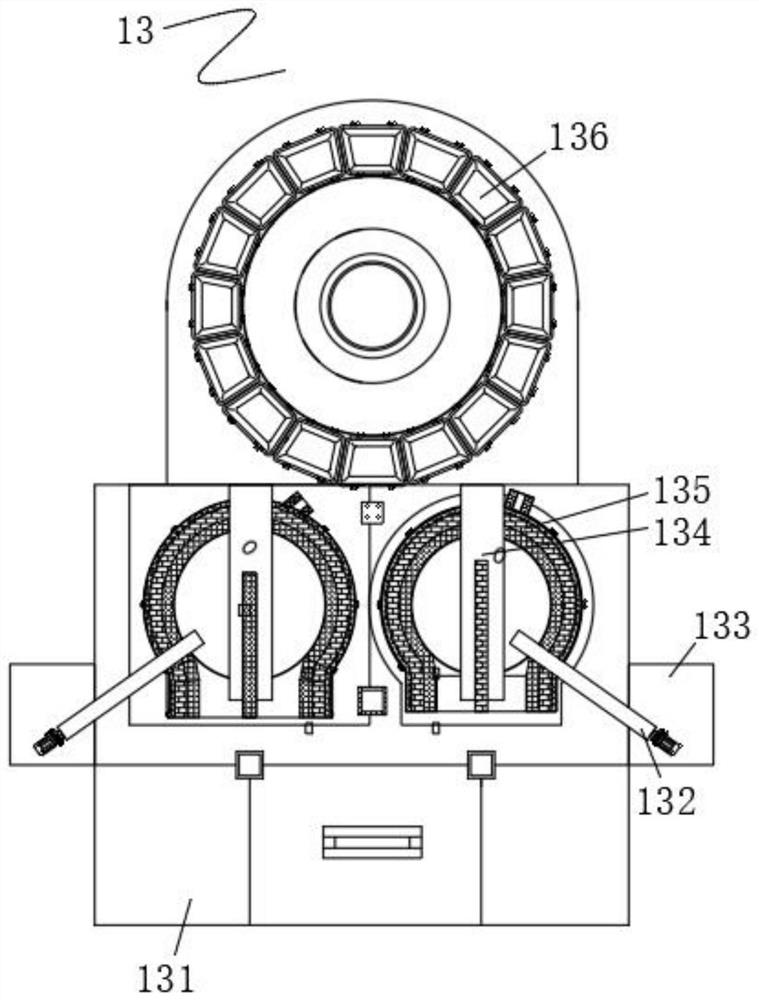Low-temperature melting and casting process for lead grid
A lead grid and low-temperature technology, applied in the field of lead grid low-temperature melting and casting technology, can solve the problems of high labor intensity, high slag production rate, and low lead production rate, etc., to reduce waste gas production, reduce high-temperature volatilization, and lead emissions cut effect
- Summary
- Abstract
- Description
- Claims
- Application Information
AI Technical Summary
Problems solved by technology
Method used
Image
Examples
Embodiment 1
[0019] A lead grid low-temperature melting and casting process, such as Figure 1-2 Commonly shown in the system, the system includes: lead grid storage bin 1, lead grid storage bin 7, weighing feeder 8, large angle conveyor 9, drying kiln and drying kiln steel platform 12 (drying kiln and drying kiln One side of the kiln steel platform 12 is provided with a hot blast stove 11, and the hot blast stove 11 uses natural gas as a heat source. When the drying device dries the lead grid, the worker can heat the air through the hot blast stove 11, and then input the hot air into the drying oven. kiln and drying kiln steel platform 12, to dehydrate the lead grid in the drying kiln.), waste gas treatment device (for processing the waste gas produced in the drying process, the waste gas treatment device includes cyclone dust collector 10, bag filter 4, The dust removal blower 21 and the fiberglass washing tower 2, the first delivery pipe 6 is connected between the cyclone dust collector...
Embodiment 2
[0027] On the basis of Example 1, the water content of the lead grid was adjusted to 10%, the melting temperature of the regenerative casting furnace 135 was adjusted to 420° C., and the rest of the technical parameters were the same as in Example 1.
Embodiment 3
[0029] On the basis of Example 1, the water content of the lead grid was adjusted to 14%, the melting temperature of the regenerative casting furnace 135 was adjusted to 430°C, and the rest of the technical parameters were the same as in Example 1.
PUM
 Login to View More
Login to View More Abstract
Description
Claims
Application Information
 Login to View More
Login to View More - R&D
- Intellectual Property
- Life Sciences
- Materials
- Tech Scout
- Unparalleled Data Quality
- Higher Quality Content
- 60% Fewer Hallucinations
Browse by: Latest US Patents, China's latest patents, Technical Efficacy Thesaurus, Application Domain, Technology Topic, Popular Technical Reports.
© 2025 PatSnap. All rights reserved.Legal|Privacy policy|Modern Slavery Act Transparency Statement|Sitemap|About US| Contact US: help@patsnap.com


